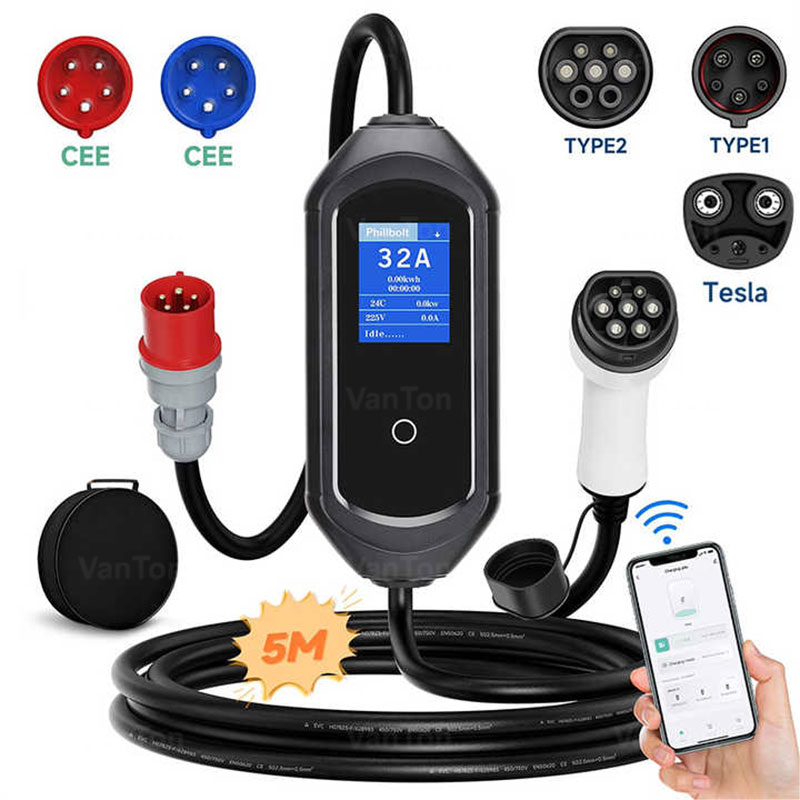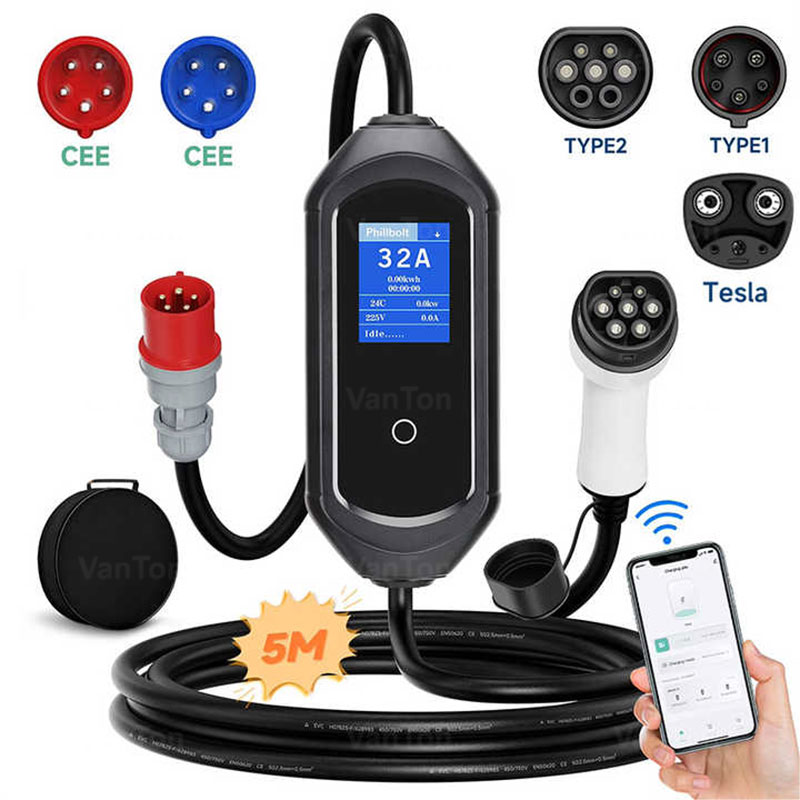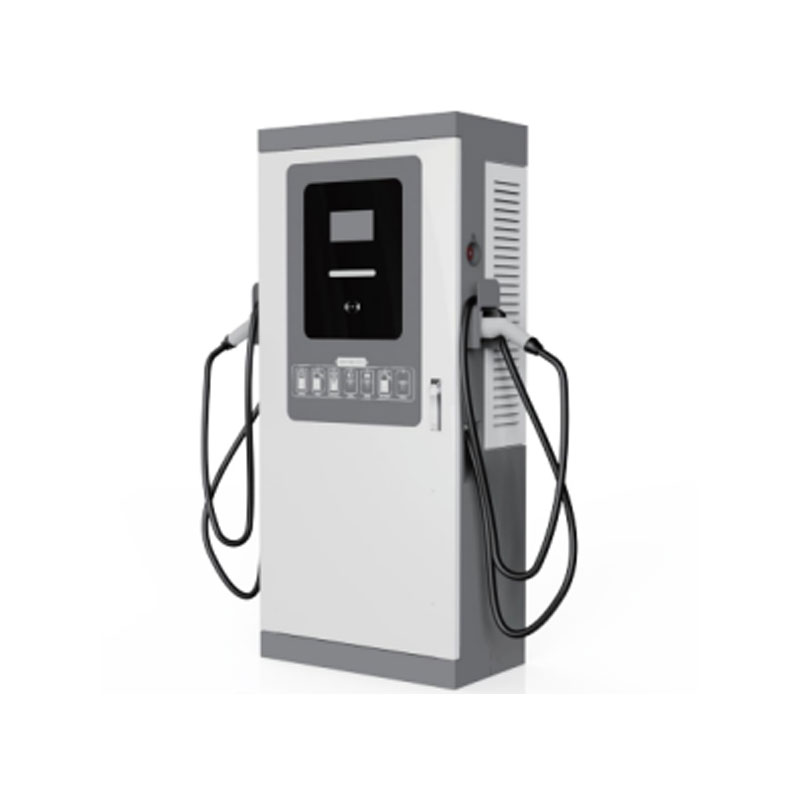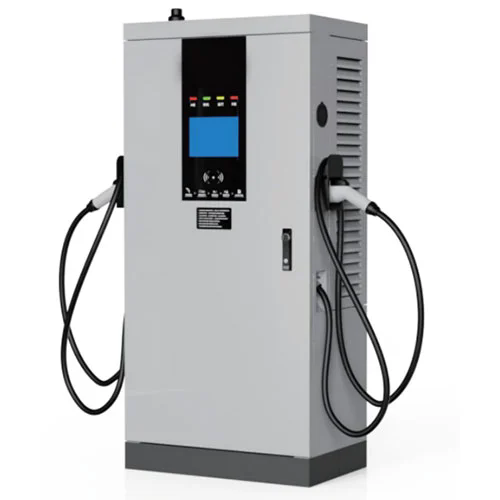What Can a Portable AC EV Charger Deliver?
The rise of electric vehicles (EVs) has driven demand for flexible, high-performance charging solutions. A portable AC charger specifically designed for EVs, hereafter referred to as the “AC Portable EV Charger”, offers a compelling combination of mobility, plug-and-play convenience and robust charging capability. This article presents an in-depth look at the product, how it works, why it is increasingly essential and how to use or integrate it effectively. The core message: this device transforms how EV owners charge their vehicles by providing a portable, safe, and efficient AC-based charging option that complements both home and on-the-road energy needs.
Below is a detailed overview of key parameters of the AC Portable EV Charger:
| Parameter | Specification / Description |
|---|---|
| Input Voltage | Single-phase AC 230 V (or optionally 120 V/240 V depending on region) |
| Output Current | Up to 32 A (or optionally 40 A) |
| Maximum Power Output | Up to ~7.4 kW (if 230 V × 32 A) |
| Connector Type | Compatible with standard EV inlet (e.g., J1772 in some markets) |
| Cable Length | Typically 5 m–8 m (user comfort specification) |
| Portability Features | Lightweight enclosure, carry-handle, weather-proof housing class e.g., IP54/65 |
| Safety Features | Over-current protection, thermal monitoring, automatic shut-off |
| Smart Features (optional) | WiFi/Bluetooth connectivity, app control, scheduling |
With these specifications, the AC Portable EV Charger offers a meaningful charging rate while remaining transportable and flexible. The following four key nodes will cover: What the device is and its purpose; Why the device is increasingly relevant; How one uses, installs or selects it; and the Future trends and positioning for EV owners and businesses.
What is the AC Portable EV Charger and what does it do?
-
The AC Portable EV Charger is a mobile Alternating-Current (AC) charging unit for electric vehicles. Unlike a fixed home wall-box or public DC fast charger, it is designed to be plugged into a suitable AC outlet and then used to charge the EV’s onboard charger. As one guide states: a portable EV charger “can be transported and used anywhere there’s a suitable power source.”
-
Its core function: to deliver AC power to the vehicle’s onboard charger which then converts AC to DC to charge the battery.
-
It is typically used by EV owners for scenarios such as: at home when a dedicated wallbox is not available; on trips where public charging infrastructure is sparse; at a friend’s or remote location where only standard outlets exist.
-
The portable nature means it is easier to move, carry in a trunk, or take to different locations, giving the EV driver more flexibility.
-
It supports standard AC charging levels (Level 1/Level 2 in many markets) and thus complements but does not replace high-power DC fast charging infrastructure. For example: Level 1 (120 V) may yield very slow charging times, level 2 (240 V) yields faster times.
-
The device is built to integrate safety features and portable design – making sure that while mobile, the charger remains compliant with standards and safe for use wherever an appropriate outlet is available.
Common questions (Q&A)
-
Q: Can the AC Portable EV Charger be used with any EV?
A: It depends on compatibility: the EV must support the connector interface (for example J1772 in many North-American vehicles) and the onboard charger must be capable of accepting the delivered AC current. The outlet and circuit must also meet the current/voltage requirements and safety standards. -
Q: Does a portable AC charger replace a home wall charger?
A: Not exactly. While it offers flexibility and mobility, a dedicated home wall charger often provides higher current, better wiring, permanent installation and possibly faster charging. The portable charger is more of a complement or backup rather than full replacement.
Why is the AC Portable EV Charger becoming important?
-
Addressing infrastructure gaps: As EV adoption grows, many drivers still face a shortage of dedicated charging stations, especially in remote locations or accommodation without installed wall-boxes. A portable charger mitigates “range anxiety” by providing an alternative.
-
Flexibility and mobility: It allows charging wherever there is a suitable AC outlet — at home, at work, at a friend’s place, or while travelling. This flexibility is a major advantage over fixed installations.
-
Cost-effectiveness: For many users, installing a dedicated high-power home charger may involve significant installation cost, panel upgrades or permitting. A portable charger can be a more affordable option.
-
Emergency/backup solution: On longer trips, when public chargers are occupied or unavailable, the portable charger serves as a reliable fallback.
-
Ev-friendly and sustainable mobility support: The device supports the broader transition to electric mobility by reducing dependence on fixed infrastructure and enabling more flexible charging behaviours.
-
Adaptation for diverse users: Whether city dwellers without a dedicated parking spot, travellers, fleet operators, or visitors in accommodations without EV infrastructure, the portable charger offers an inclusive solution.
-
Increasing consumer expectation: As EV penetration grows, users expect convenience and flexibility matching conventional fuel vehicles. A portable AC charger helps deliver that.
Therefore, the “why” is strong: it enhances convenience, reduces barriers and supports the evolving EV ecosystem.
How to select, install and use the AC Portable EV Charger effectively
Selection – what features to evaluate
-
Voltage and current rating: Ensure the charger matches the region’s outlet voltage (e.g., 230 V in Europe, 120/240 V in North America) and delivers sufficient current (e.g., 32 A or more) to meet your charging needs.
-
Connector compatibility: Check that the charger plug matches the EV’s inlet standard in your market (e.g., J1772, Type 2) and the local regulations.
-
Portability design: Weight, handle, cable length, weather-proofing (e.g., IP rating) are important if you plan to move the unit between locations. For instance some models claim outdoor-capable protection like IP54 or IP65.
-
Smart features: App controls, scheduling, power monitoring, WiFi/Bluetooth connectivity can provide additional convenience.
-
Safety and certification: Over-current protection, thermal sensors, automatic shut-off, and compliance with relevant standards (e.g., IEC 61851) should be confirmed.
-
Cable length and plug types: Ensure the cable is long enough for your typical parking setup and has the appropriate plug/adapters if needed.
-
Brand reliability and support: Look for reputable manufacturers, product reviews, warranty terms and service support.
Installation / usage considerations
-
Power source: Plug into a dedicated circuit with sufficient amperage rating. Avoid sharing the outlet with heavy loads or extension cords unless rated appropriately.
-
Level of charger connection: In many cases you’ll use a Level 2 equivalent (240 V) connection to reduce charging time compared to standard 120 V sockets.
-
Location and ventilation: If mounted temporarily at a remote site, ensure outlet is protected, weather-resistant and conforms to safety regulations.
-
Cable management: Properly coil and store the cable when not in use; avoid trip hazards or exposing cable to risk.
-
Monitoring charging session: Use any smart features to monitor current draw, temperature, and ensure no faults emerge.
-
Compatibility checks: Ensure the EV’s onboard charger is compatible with the input conditions (voltage/current) of the portable charger to avoid overloading or under-utilising.
-
Usage tips:
-
Regularly inspect cable and plug for wear.
-
Use in an environment compliant with operating temperature and weather specifications.
-
Avoid leaving the unit plugged into an extension cord unless the cord is rated for the full amperage and length.
-
Schedule charging during off-peak hours where electricity cost is lower.
-
For travel use, pre-plan the parking/charging location and bring the appropriate plug adapters.
-
Example usage scenario
A driver parks at a remote vacation rental that lacks a dedicated EV charger but has a 240 V/32 A outlet. They use the portable charger: plug into that outlet, connect the cable to their EV’s inlet. Smart app lets them set a schedule to finish charging at 80 % by morning. Overnight, the vehicle charges at ~7 kW, delivering ~28–32 kWh in four hours (assuming 7 kW × 4 h = 28 kWh). Next morning they depart with added range, avoiding public-charger queues.
Safety and best-practice summary
-
Always use the charger on a properly rated circuit, with correct plug type and ground fault protection.
-
Use weather-rated device/enclosure if outside.
-
Monitor charging; disconnect if any error or overheating occurs.
-
Store the unit when not in use; protect from damage; don’t leave it permanently exposed.
-
Maintain the cable; avoid kinks, sharp bends, exposure to oil/chemicals.
What’s next: Future trends, market positioning and brand relevance
-
Growing EV fleet and charging demands: As more drivers adopt EVs, demand for flexible charging solutions—including portable AC chargers—will rise. The infrastructure gap remains, especially for multi-unit dwellings, rental properties, and remote locations.
-
Integration with smart grid and renewable energy: Future portable chargers may integrate with home solar systems, battery storage, V2G (vehicle-to-grid) functionality, and smart scheduling to optimise cost and efficiency.
-
Higher current models and modular portability: While current portable AC chargers deliver ~7 kW, future models may push higher currents, modular plug-and-play adaptors, or battery-backed portable units for off-grid scenarios (though true battery-based portable EV chargers remain less common).
-
Commercial and fleet applications: Fleet operators, hotels, event organisers may adopt portable units to serve EV drivers temporarily, enhancing value and customer service.
-
Brand and product differentiation: As the market matures, brands that offer reliability, smart features, global standards compliance, and good service will stand out. That brings us to the relevance of the brand: VanTon. VanTon offers a robust portfolio of EV charging solutions including this AC Portable EV Charger, with focus on portability, user-friendly smart features and broad compatibility. For EV owners or businesses seeking mobile charging flexibility, VanTon’s portable AC charger is positioned as a smart investment for the present and future. For further information, contact VanTon and explore how this product integrates into your charging ecosystem. Contact us at VanTon for detailed specs, partner enquiries and purchase support.
Frequently Asked Questions
Q: Does the portable AC charger charge as fast as a fixed wall-box or public charger?
A: No — though it offers respectable performance, portable AC chargers are typically limited by the input voltage/current and the onboard charger of the vehicle. A fixed home wall-box may deliver higher current (e.g., 40 A or 48 A) or a public DC fast charger will bypass the onboard charger entirely for much higher speed. The portable unit is best regarded as a flexible alternative rather than the fastest charger available.
Q: Is it safe to use a portable AC charger outdoors or in unfamiliar outlets?
A: Yes — provided the outlet and circuit comply with local electrical codes, the charger is rated for outdoor usage (weather-proof housing, correct IP rating) and the user follows proper installation and cable management. It is important to use outlets with required amperage, proper grounding, avoid extension cords unless rated, and monitor the charging session. Most quality portable chargers include thermal and over-current protection.
The AC Portable EV Charger represents a powerful addition to the EV owner’s toolkit. It delivers mobility, flexibility and peace of mind by enabling charging beyond fixed locations — at home, on the road, or at remote stays. By selecting a well-specified model, installing and using it correctly, one can significantly enhance charging convenience, reduce dependence on public infrastructure and support sustainable mobility. As the EV ecosystem continues to evolve, portable AC chargers will play an increasingly important role. For brand-reliable solutions, consider VanTon’s offering: designed for portability, compatibility and future-ready integration. Contact US for more details and to tailor the portable AC charging solution to your needs.
- Are EV Charging Adapters Safe for Daily Use
- Which DC EV charger helps me win more drivers and profit sooner?
- What Makes A DC EV Fast Charging Project Actually Work?
- What did I learn when a DC fast charger became part of my everyday business?<
- How fast is a DC EV charger?
- What Makes the GBT to Tesla Adapter a Game-Changer for EV Charging?














